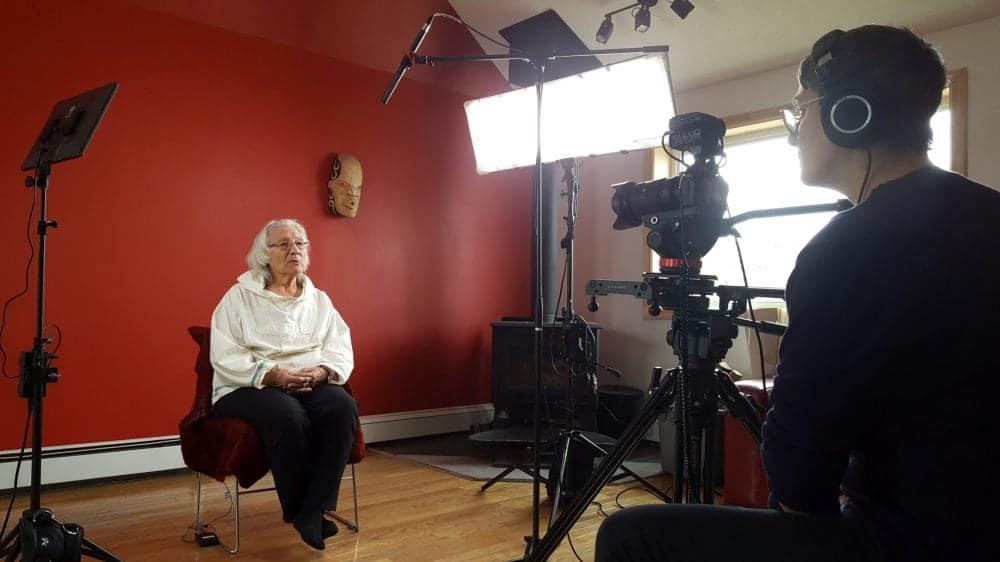Miriam Aglukark learned the traditional song she brought to the pisiit course offered by Qaggiavuut at the request of elder Martha Qammukkaaq.

Elder instructor Miriam Aglukark of Gjoa Haven tells the story of the pisiq she taught, composed by a relative of her husband, to Qaggiavuut's Jamie Griffiths. The recordings and videos of all seven elders who taught the pisiit course will be used to develop a learning application for iPads.
"Siutinnuaq made the song for the generation to remember the story. He was an elder, the father of Qirniq. His children are still living. He lived somewhere close to Ikaluktutiak (Cambridge Bay), near Gjoa Haven," said Aglukark, via interpreter and researcher Annie Petaulassie.
"Her name was Qammukkaaq, but she got the name from her husband – who was the relative of the composer."
Aglukark says Anglican and Catholic priests didn't want the people to sing the traditional songs because they thought it was shamanism.
"They stopped them. But they were not shamanism. They used to sing the traditional songs for healing, to try to make themselves happy even though they are going through a hard life."
As Aglukark explains, the songs tell a variety of stories. For example, they sang about long journeys, naming the places they went through.
"Some of them made a song about a place where they were camping and when they got sick, they moved to another place. That's one of the things they sang about," she said.
"Inuit used to believe that if they lived in the camp for too long the people of the land got tired of having them camping there, and they have to leave, and come back next year. That's how they got the song, by singing about the camp."
They also sang about camps where they got hungry or starving, and having to move on to another place to look for game.
"The people used to migrate from place to place to look for where they can find the animals to hunt, a better place to hunt the animals. They wanted their family, their children to survive," said Aglukark.
She says when she was younger she didn't want to learn how to sing because she was told, "When we're singing traditional songs it has to come from the chest, and at the church they sing somewhere more from the throat."
Aglukark demonstrates how the hymns of the church differ from pisiit. Hand to heart, she shows how pisiit resonate from a breath deep in the chest, near the heart, while the sound of hymns are located higher.
The first song she did learn was called Paani (somewhere over there) from her cousin Qammukkaaq.
"I kept the song in my mind in the way the composer sang it. He was walking as a man, proud. I was acting like a man, while I was singing. That's why I liked that song," she said, moving her body as she explains with a grin, emulating a proud man walking.
Aglukark learned another song from her grandfather, Tuutiaq, and she sings a bit of it for Nunavut News.
"When I was a kid I used to hear that song. The composer was saying that when he was out hunting for the seals he wasn't able to catch one even though he did everything he could. It's a long, long song, that's why I didn't sing it (at this course)"
She says she learned those two songs because she liked them so much.
About the pisiit course, Aglukark says she's happy to teach the youth the traditional songs because it encourages them to learn to have a better life.
"These songs really encourage young people to learn they can have a better life, to not get into trouble. Nowadays, they do all sorts of things to live in a way that parents or people don't want them to live. I like to teach the youth the traditional songs because by memorizing the songs they can learn that they can have a good life and it can encourage them to live that way."